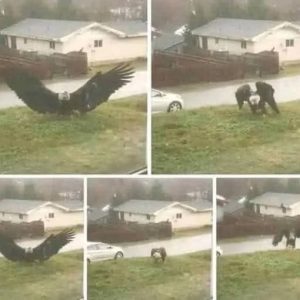
The Hidden Faces of the Forest
If I told you that almost no one can spot all the faces hidden in a tree within thirty seconds, would you believe me?
At first, it’s just bark—rough, silent, ordinary.
But look longer. The grooves shift, the shadows stir, and suddenly, something gazes back.
No magic. No illusion.
Just your brain—playing one of its oldest and cleverest tricks.
The Secret Behind the Seeing
This phenomenon has a name: pareidolia—our mind’s tendency to find familiar patterns where none were meant to be. A cloud shaped like a rabbit. A power outlet smiling at you. A tree that seems… alive.
Once upon a time, this instinct kept our ancestors safe.
Spotting a face in the dark—friend or foe—could mean the difference between survival and silence. That vigilance never left us; it only adapted. Now it hides in art, in clouds, in the ripples of everyday life.
When Trees Begin to Watch
Tree bark, especially, is a master of disguise.
Knots become eyes. Cracks turn into mouths.
Branches bend into the curve of a cheek.
Sometimes, if you’re patient, a whole crowd appears—old souls in the trunks, lovers etched into woodgrain, a child’s laughter caught in the roots. It’s as if the forest remembers us and sketches our reflections back in secret.
Art That Watches Back
Artists know this magic well.
By tucking faces into natural textures—trees, rocks, rivers—they invite the viewer into a game of discovery. You look once, then twice, and suddenly you’re part of the art. Each hidden face rewards patience, curiosity, and attention—the very qualities that keep people lingering, sharing, and returning.
Pareidolia, in art, isn’t just an illusion.
It’s a dialogue between creator and observer.
What We Really See
But these faces aren’t only tricks of the eye.
They mirror what we carry inside.
When you see a serene expression in bark, maybe it’s calm you’re craving. When a gnarled knot looks angry, perhaps it’s echoing your own tension.
Pareidolia is perception wearing emotion’s disguise—a reflection of how we find meaning even in chaos.
A Quiet Invitation
So, next time you walk beneath the trees, slow down. Let your gaze soften.
You might find the forest is full of company—faces waiting patiently in the wood, unseen by those who rush past.
It’s not imagination; it’s insight.
Your brain, painting stories on the canvas of the world.
Conclusion
Pareidolia is more than a trick of vision—it’s a window into how we connect. From ancient instincts to modern art, it reveals our need to find faces, stories, and meaning in everything we touch.
The next time you notice eyes in the bark or a smile in the clouds, don’t look away.
That’s your mind reminding you:
The world is never as empty as it seems.




